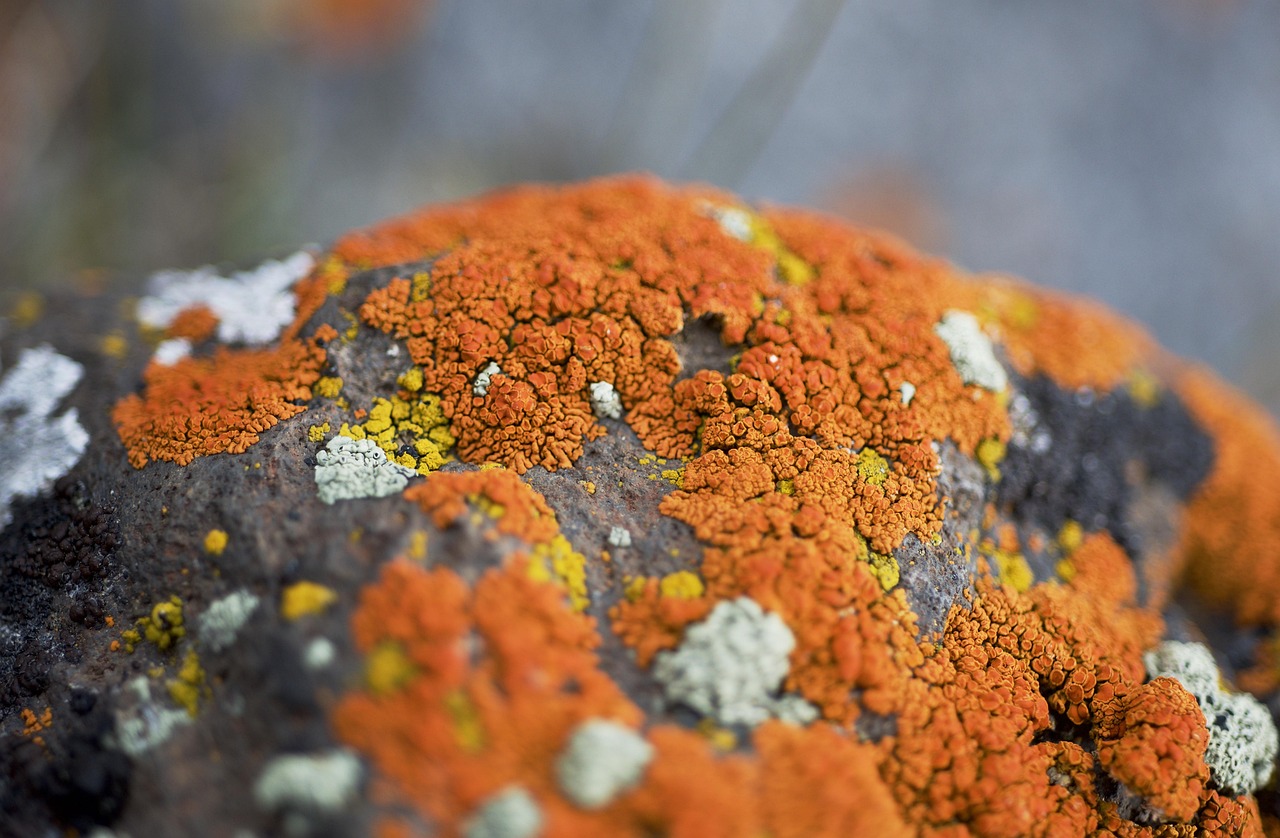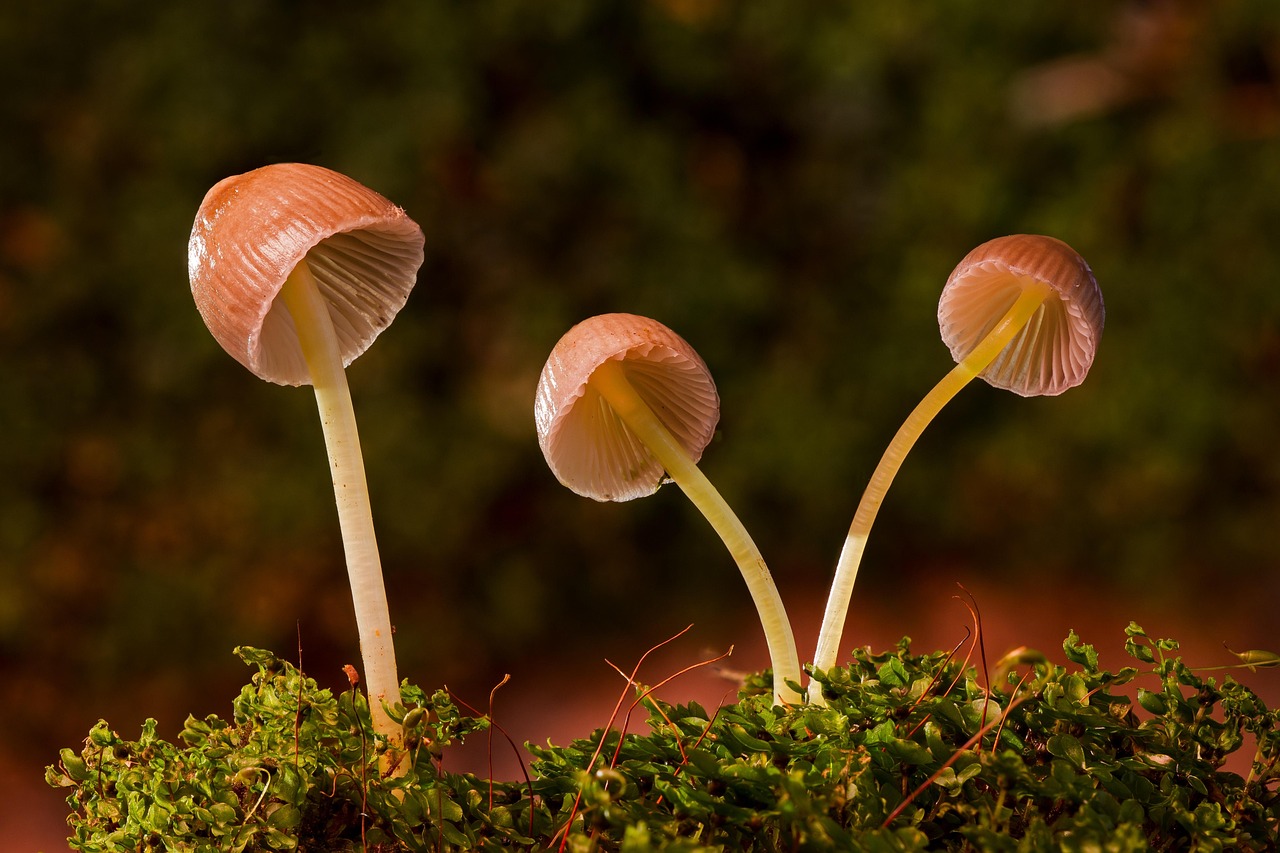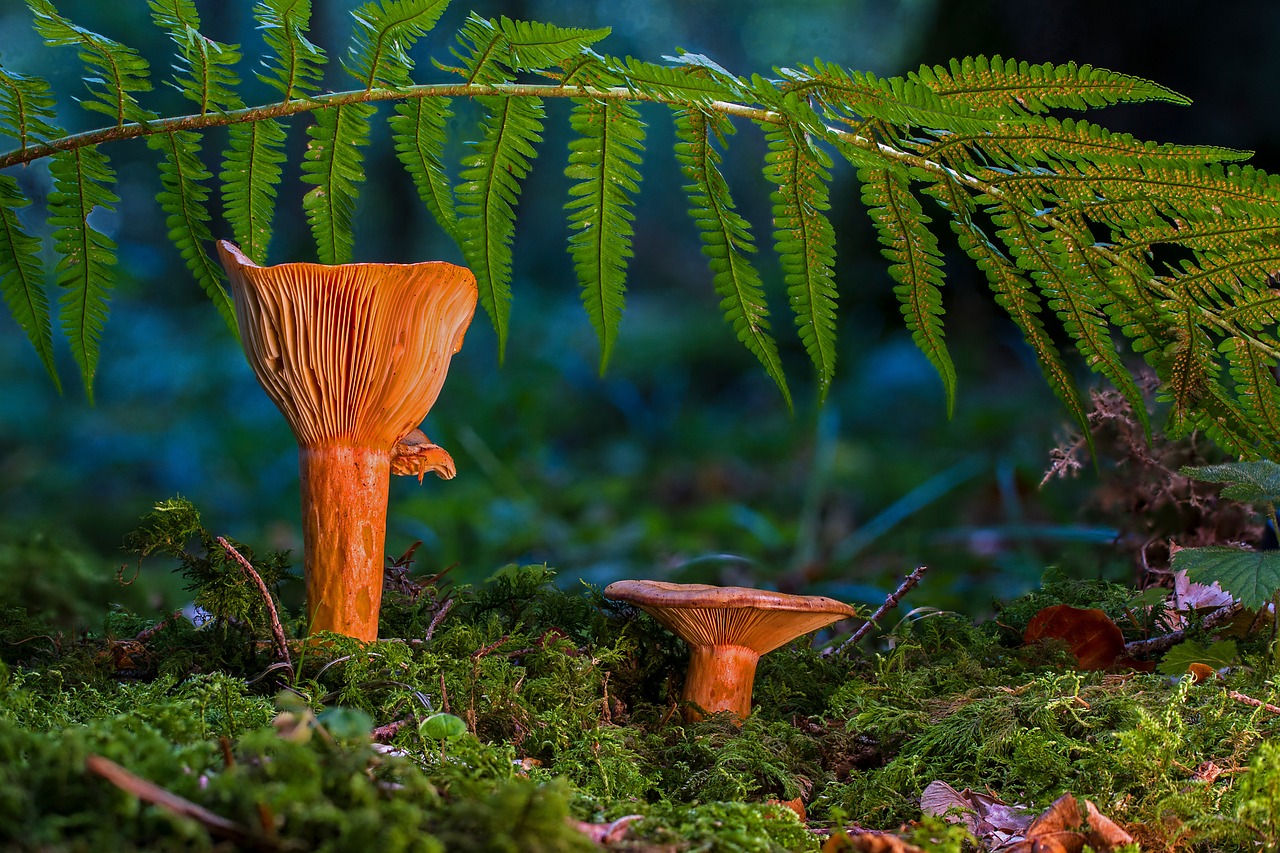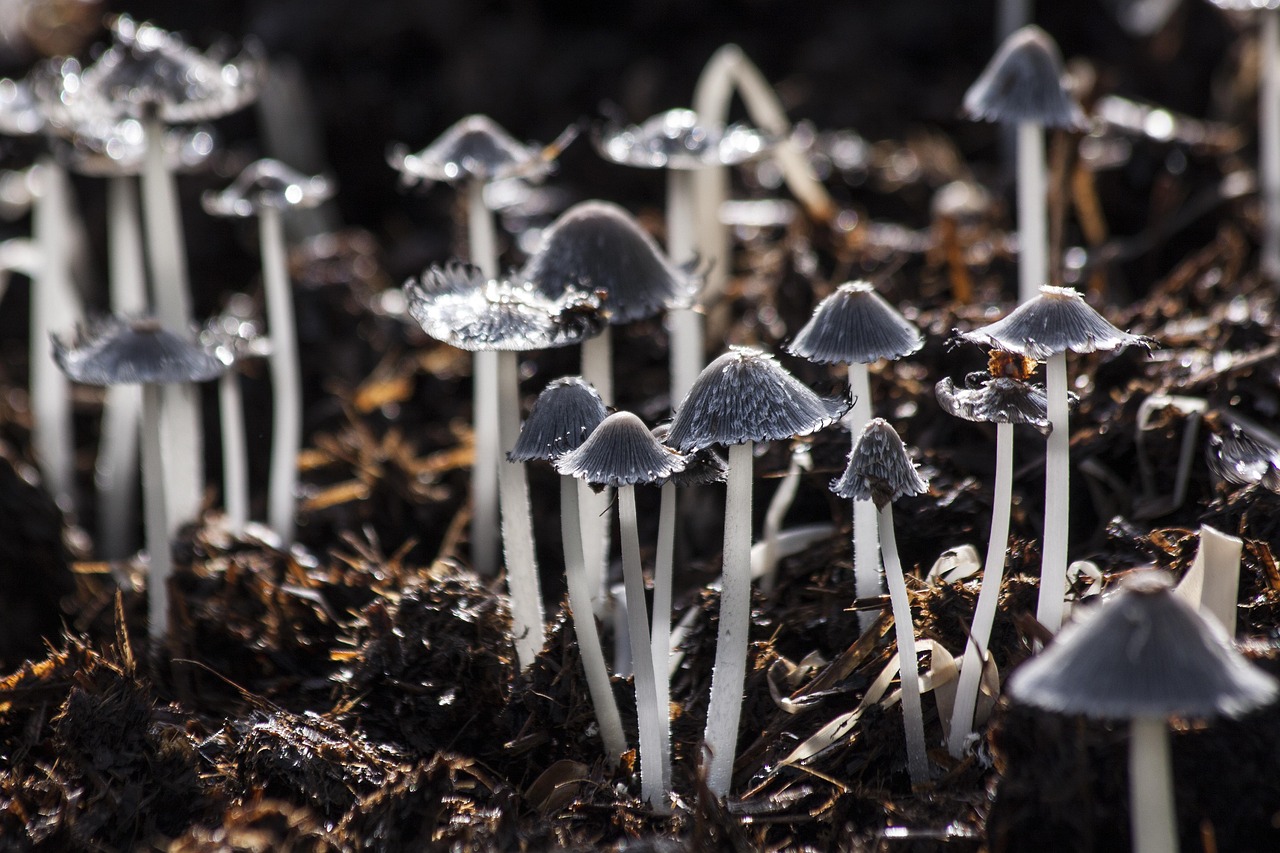Understory plants and fungi that thrive beneath oak trees include a diverse array of species such as ferns, wildflowers, and various types of mushrooms. These organisms play essential roles in the ecosystem, contributing to soil health and providing habitat for wildlife.
The Importance of Understory Plants and Fungi

Understory plants and fungi are crucial components of forest ecosystems. They create a rich tapestry of life beneath the canopy, supporting both biological diversity and ecological functions. The area beneath oak trees is particularly vibrant due to the unique conditions created by the towering oaks. This environment allows for a variety of understory species to flourish.
The understory is characterized by lower light levels and higher humidity than the forest floor. This microclimate supports specific plant and fungal life that has adapted to these conditions. Some species thrive on the decaying leaf litter that accumulates from oak trees, while others prefer the damp soil found in the shade.
Diversity of Understory Plants
Understory plants can be categorized into several groups, including herbs, shrubs, and ferns. Each group contributes differently to the ecosystem. Here are some common types of understory plants found beneath oak trees:
- Ferns: Species such as the maidenhair fern and bracken fern are prevalent. They thrive in shaded areas and contribute to soil stability.
- Wildflowers: Many wildflowers bloom in spring, such as trillium and wild leeks. These plants not only add beauty but also provide nectar for pollinators.
- Shrubs: Plants like spicebush and dogwood offer food and shelter for various animals.
The Role of Fungi
Fungi are another important component of the understory ecosystem. They have various roles, from decomposers to symbiotic partners with plants. Many fungi establish mycorrhizal relationships with oak trees, enhancing nutrient uptake for both the fungi and the tree.
Some fungi are also important for their role in breaking down organic matter. This process enriches the soil, making it more fertile for understory plants. Additionally, certain mushrooms, like chanterelles or morels, are prized for their culinary uses and can often be found in oak forests.
Benefits of Understory Plants and Fungi
The benefits of having a healthy understory are numerous:
- Biodiversity: A rich understory supports a variety of wildlife, including insects, birds, and mammals.
- Soil Health: The decomposition of organic matter by fungi and plants improves soil quality.
- Water Retention: Understory vegetation helps retain moisture in the soil, benefiting all forest inhabitants.
Key Facts About Oak Understory Ecosystems
| Fact | Description |
|---|---|
| Species Diversity | Oak forests support a wide variety of understory species due to diverse microhabitats. |
| Light Conditions | Understory plants adapt to lower light levels compared to the forest canopy. |
| Decomposers | Fungi and bacteria play a crucial role in nutrient cycling within the ecosystem. |
Understanding the intricate relationships between oak trees, understory plants, and fungi reveals the complexity of forest ecosystems. Each component plays a vital role in sustaining life and maintaining ecological balance.
Common Understory Plants Beneath Oak Trees
In oak forests, a variety of understory plants thrive in the shaded environment. These plants not only add aesthetic value to the forest but also serve crucial ecological functions. Below are some of the most common understory plants found beneath oak trees:
- Ferns: Species such as the lady fern and ostrich fern are prevalent. They prefer moist, shaded areas and contribute to soil stabilization.
- Wildflowers: Early spring ephemerals, including bloodroot and Virginia bluebells, bloom before the oak canopy fully leafs out, taking advantage of the increased sunlight.
- Shrubs: Common shrubs like hazelnut and black raspberry provide food and cover for various wildlife species.
- Grasses: Certain grass species, like woodland fescue, thrive in the dappled light, helping to prevent erosion on forest floors.
Adaptations of Understory Plants
Understory plants have developed unique adaptations that enable them to thrive in low-light conditions. These adaptations include:
- Leaf Structure: Many understory plants have broad leaves that maximize sunlight capture, allowing them to photosynthesize efficiently even in shaded environments.
- Growth Habit: Some species grow tall and slender, reaching for any available light. Others may spread horizontally to cover more ground.
- Timing of Growth: Many understory plants are perennials that emerge early in spring. They take advantage of the sunlight that filters through the trees before the canopy closes.
Fungi Diversity Beneath Oak Trees
Beneath the oak canopy, fungi play a significant role in nutrient cycling and ecosystem health. The diversity of fungi includes both mycorrhizal species that form partnerships with trees and saprophytic fungi that decompose organic matter.
Types of Fungi
In oak forests, several types of fungi can be found:
- Mycorrhizal Fungi: These fungi form symbiotic relationships with the roots of oak trees. They enhance nutrient and water absorption for the tree while receiving carbohydrates in return. Common genera include Boletus and Russula.
- Saprophytic Fungi: These fungi break down dead organic material, recycling nutrients back into the soil. Well-known examples include decomposers like Ganoderma and various types of mushrooms.
- Lichens: Though not fungi in the strict sense, lichens are a symbiotic association between fungi and algae or cyanobacteria. They can often be seen growing on oak bark or nearby rocks.
The Role of Fungi in Ecosystem Health
Fungi contribute significantly to the overall health of oak forest ecosystems. Their roles include:
- Nutrient Cycling: Fungi help break down complex organic materials, releasing essential nutrients back into the soil for use by plants.
- Soil Structure Improvement: The mycelium network helps bind soil particles together, improving soil structure and preventing erosion.
- Pest Control: Certain fungi can act as biological control agents against pests that may threaten oak trees and understory plants.
Interactions Between Understory Plants and Fungi
The relationship between understory plants and fungi is integral to maintaining a healthy ecosystem. Many plants rely on mycorrhizal fungi for nutrient uptake, particularly phosphorous, which is often limited in forest soils.

This symbiotic relationship allows the plants to thrive even in nutrient-poor conditions. In return, the fungi receive carbohydrates produced by the plants through photosynthesis. This interdependence highlights the complexity of ecological relationships beneath oak trees.
These interactions form a network of life that supports not only individual species but also the broader ecosystem. Understanding these relationships is vital for conservation efforts and maintaining biodiversity within oak forests.
Wildlife Supported by Understory Flora

The understory beneath oak trees does not only support plants and fungi; it also serves as a crucial habitat for various wildlife species. The combination of diverse flora provides food, shelter, and breeding grounds for numerous animals. Understanding the wildlife interactions within this ecosystem can help us appreciate the complexity of life under oak canopies.
Birds of the Understory
Many bird species rely on the understory for food and nesting sites. The dense foliage offers protection from predators while the abundance of insects and seeds provides a reliable food source. Some notable birds that can be found in oak forest understories include:
- Wood Thrush: Known for its beautiful song, this bird often nests in dense shrubs and feeds on insects and berries.
- Ovenbird: A ground-nesting warbler that thrives in leaf litter, it feeds on small invertebrates found among understory plants.
- Eastern Towhee: This bird prefers shrubby areas where it searches for seeds and insects.
Mammals in the Understory
The understory also provides habitat for various mammals. Many small mammals find refuge among the shrubs and herbaceous plants, while larger mammals may use the area for foraging. Common mammals include:
- White-tailed Deer: These deer browse on understory vegetation, including young shoots and tender leaves.
- Rabbits: Species such as the Eastern Cottontail thrive in dense cover, seeking safety among the underbrush.
- Squirrels: Both tree squirrels and ground squirrels utilize the understory for foraging nuts and seeds.
Insects and Other Invertebrates
The understory is teeming with insect life, which plays a vital role in pollination, decomposition, and serving as a food source for other animals. Key groups of insects found in these environments include:
Pollinators
Many flowering plants depend on insects for pollination. Bees, butterflies, and other pollinators are attracted to the variety of flowers that bloom in the understory. Some important pollinators include:
- Bumblebees: These robust bees are essential for pollinating many wildflowers and fruiting plants.
- Butterflies: Species like the Eastern Tiger Swallowtail are attracted to flowers, aiding in pollination as they feed on nectar.
Decomposers
Insects such as beetles, ants, and earthworms play a crucial role in breaking down organic material. Their activities help recycle nutrients back into the soil, supporting plant growth. Notable decomposers include:
- Earthworms: They aerate the soil while consuming organic matter, facilitating nutrient cycling.
- Woodlice: Also known as pillbugs, they feed on decaying plant material, contributing to decomposition.
The Impact of Human Activity on Understory Ecosystems

Human activities can significantly impact the health of understory ecosystems beneath oak trees. Deforestation, urbanization, and pollution pose threats to these delicate environments. It is important to be aware of these impacts to promote conservation efforts.
Deforestation and Habitat Loss
The clearing of wooded areas for agriculture or development leads to habitat fragmentation. This can isolate wildlife populations and reduce biodiversity. Loss of understory vegetation diminishes food sources and shelter for many species.
Pesticides and Pollution
The use of pesticides can adversely affect both plant and animal life in the understory. Chemicals may harm beneficial insects like pollinators and disrupt ecological relationships. Additionally, pollution can degrade soil health, impacting plant growth and fungal activity.
Conservation efforts focused on protecting oak forests and their understories are essential for maintaining biodiversity and supporting wildlife. By understanding the intricate relationships within these ecosystems, we can better appreciate their value and work towards their preservation.
Conservation Strategies for Understory Ecosystems
To protect the rich biodiversity found in understory ecosystems beneath oak trees, effective conservation strategies are necessary. These strategies focus on habitat preservation, sustainable practices, and community engagement. Below are some key approaches to conserve these vital areas:
Habitat Restoration
Restoration efforts can help rehabilitate degraded understory environments. This may involve:
- Replanting Native Species: Introducing native understory plants can help restore ecological balance and promote biodiversity.
- Removing Invasive Species: Invasive plants can outcompete native flora. Efforts should focus on controlling or eliminating these species to allow native plants to thrive.
- Improving Soil Health: Practices such as composting and mulching can enhance soil quality, leading to healthier plant growth.
Sustainable Land Management
Implementing sustainable land management practices is crucial for maintaining healthy oak forests and their understories. This includes:
- Responsible Timber Harvesting: Selective logging techniques can minimize damage to the understory while still allowing for timber production.
- Avoiding Overgrazing: Managing livestock grazing can help prevent the degradation of understory vegetation, ensuring that native plants have room to grow.
- Integrating Organic Farming: Reducing pesticide use in agriculture surrounding oak forests can improve the health of nearby understory ecosystems.
Community Engagement and Education
Engaging local communities in conservation efforts is vital. Educating the public about the importance of understory ecosystems can lead to greater support for preservation initiatives. Ways to promote awareness include:
- Workshops and Nature Walks: Organizing events that highlight the beauty and importance of oak forests and their understories can foster appreciation and stewardship.
- Collaborating with Schools: Educational programs in schools can teach children about local ecosystems and encourage them to participate in conservation activities.
- Creating Volunteer Opportunities: Involving community members in restoration projects can strengthen connections to the land and promote a sense of ownership over local resources.
Final Thoughts
The understory beneath oak trees represents a dynamic and vital part of forest ecosystems. This area is home to a myriad of plants, fungi, and wildlife that work together to create a balanced environment. Understanding the intricate relationships between these species provides insight into the importance of conserving these habitats.
Human activities pose significant threats to the health of understory ecosystems, making it essential to implement effective conservation strategies. By focusing on restoration, sustainable practices, and community engagement, we can work towards preserving these invaluable environments for future generations.
The ongoing study of understory plants and fungi will continue to reveal new insights into their roles within the ecosystem. As we deepen our understanding of these relationships, we become better equipped to protect and nurture the biodiversity that thrives beneath oak trees. Embracing conservation efforts not only benefits these ecosystems but also enriches our own lives through enhanced natural beauty and improved ecological health.
Ultimately, the health of oak forest understories is a reflection of our commitment to preserving nature. Together, we can ensure that these vital ecosystems continue to flourish, providing sustenance and shelter for countless species while enhancing the quality of our environment.
